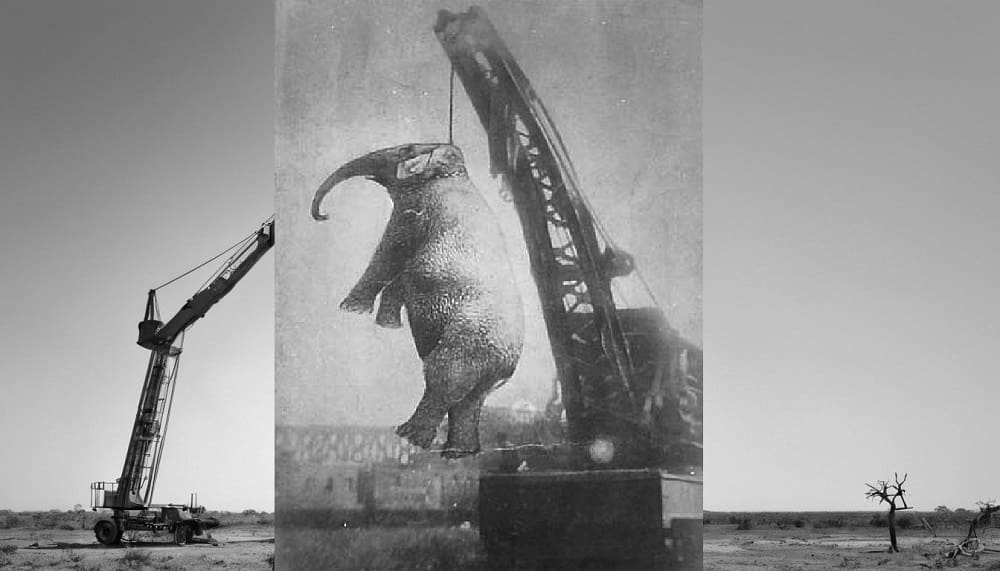The story of Murderous Mary, also known as "Big Mary," is a tragic and unusual chapter in the history of circus animals. Mary was an Asian elephant who gained notoriety in 1916 when she was hanged to death in Erwin, Tennessee.
At the time, Mary was part of the Sparks World Famous Shows, a traveling circus owned by Charlie Sparks. On September 12, 1916, in the town of Kingsport, Tennessee, tragedy struck. During a parade, a drifter named Red Eldridge, who was hired as an assistant elephant trainer, began tormenting Mary with a metal hook known as a "bullhook" or "ankus." The reasons for his mistreatment of the elephant are unclear, but it is believed that he was either trying to assert dominance or demonstrate his authority.
Mary, understandably distressed, responded by picking Eldridge up with her trunk and throwing him to the ground, killing him. The incident shocked the community, and Mary's fate was sealed.
The circus owner, Charlie Sparks, faced public pressure to do something about the dangerous elephant. The decision was made to execute Mary as a form of retribution and to send a message. On September 13, 1916, the town of Erwin staged a public execution of the elephant, an event witnessed by thousands of people, including children.
A derrick was used to lift Mary into the air with a chain around her neck. The first attempt to hang her failed as the chain snapped, causing Mary to fall and break her hip. The second attempt was successful, and Mary was hanged to death. The entire spectacle was both tragic and gruesome, and it sparked outrage from animal rights activists and the public.
The Unforgettable Final Day of Mary's Life
It was a somber day under the big top, the air thick with an unusual tension as a dark cloud hung over the circus grounds. The star attraction, a massive and seemingly gentle elephant named Mary, was about to take her final walk – not under the spotlight, but to the gallows.
Murderous Mary, as she had come to be known, was no ordinary circus elephant. A tragic incident had occurred, leaving a town in shock and the circus in disarray. The giant creature, known for her docility, had unexpectedly turned violent during a performance, resulting in the unfortunate death of a handler.
The circus owners faced a difficult decision. Mary, who had been a beloved and reliable performer for years, was now seen as a danger. The circus's reputation was tarnished, and the townsfolk demanded justice. In a time when animals were often considered expendable, the decision was made to put Mary on trial for her alleged crime.
The makeshift courtroom was set up near the circus grounds, where a jury of locals deliberated Mary's fate. The trial was a spectacle in itself, with emotions running high on both sides. Supporters argued that Mary had been provoked or had simply reacted instinctively. Detractors demanded retribution for the tragedy that had unfolded.
As the sun dipped below the horizon, casting long shadows across the circus grounds, the jury reached a verdict. Mary was sentenced to death.
The execution was to take place in a chilling manner – a giant gallows was erected for the majestic creature. The once-celebrated performer was led to the ominous structure, chains clinking as she walked, her eyes reflecting a mix of confusion and sadness.
A hushed silence fell over the crowd as Mary stood beneath the gallows. A heavy heart weighed on the circus performers who had shared their lives with this gentle giant. The executioner, with a heavy heart, pulled the lever, and the world watched as Murderous Mary's life was abruptly extinguished.
The circus, once a place of joy and wonder, became a symbol of tragedy that day. The memory of Murderous Mary's final walk to the gallows lingered, casting a shadow over the world of entertainment. It was a stark reminder of the thin line between the wild and the tamed, the joy and the sorrow, under the grandeur of the big top.
The story of Murderous Mary serves as a dark reminder of the mistreatment of circus animals during that era and the questionable ethics surrounding their captivity. It also highlights the tragic consequences of human cruelty towards animals and the extreme measures taken in the name of public safety during a time when animal welfare was not a prominent concern.














0 comments:
Post a Comment